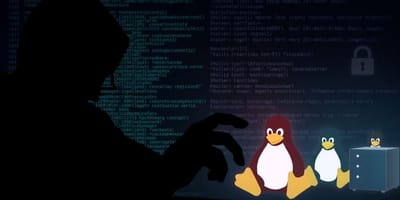Ever felt overwhelmed trying to use Linux as a server for the first time? You’re not alone. For many, stepping into the world of Linux can feel like trying to read a book in a foreign language you’ve never studied before. I remember the first time I opened the terminal—I thought, “what is this?” But the truth is, Linux doesn’t have to be intimidating.
Linux is one of the most powerful tools for managing servers, and its command line is where the magic happens. Whether you’re overseeing a small website or managing data for an enterprise, knowing your way around basic Linux commands can save you time, effort, and even stress. This guide is here to help you confidently take that first step into Linux server management. We’ll cover foundational commands to help you hit the ground running.
What’s the Deal with Linux Servers?
Why is Linux such a superstar in the server world? Here’s why businesses, developers, and tech enthusiasts swear by it:
- Open-Source and Free: Unlike other server operating systems, Linux is open-source, meaning anyone can use it and even modify it to suit their needs at no cost.
- Stability and Security: Linux systems are remarkably stable and secure, making them ideal for servers running 24/7.
- Customizability: You have full control over how your Linux system operates, thanks to its modular design.
- Command-Line Power: While initially daunting, the Linux command-line interface gives users incredible control over a server’s functions and processes.
Yes, the command line can feel like a steep learning curve. But don’t think you need to memorize every command in the Linux dictionary. Start small, learn the basics, and you’ll be managing your Linux server like a pro.
Setting Up for Success
Before jumping into commands, you need to access your Linux server. Here’s how to get set up:
- Login via SSH (Secure Shell): SSH is the most common way to access your Linux server remotely. Use tools like PuTTY (for Windows) or your terminal (for macOS/Linux) to connect. All you need is your server’s IP address and your login credentials.
- Familiarize Yourself with the Terminal: The terminal is where you’ll enter commands. Open it up, take a deep breath, and get ready to type!
10 Must-Know Basic Linux Commands for Beginners
Now, onto the fun stuff! These 10 commands will be the foundation of your Linux server management skills.
1. pwd: Where Am I?
Type pwd (print working directory) to see the directory you’re currently in. It’s like Google Maps for your terminal.
pwd
/home/username2. cd: Navigating Directories
Use cd (change directory) to move between folders. Want to go up a directory? Just type cd ... Need to head to a specific folder? Use cd foldername.
cd /var/www3. ls: What’s in Here?
The ls (list) command lets you view the content of a directory. Add -l for detailed info or -a to see hidden files.
ls -lwhich returns something like this
total 44
drwxr-xr-x 2 root root 4096 Apr 22 2024 backups
drwxr-xr-x 14 root root 4096 May 11 03:33 cache
drwxrwsrwt 2 root root 4096 Feb 16 20:58 crash
drwxr-xr-x 44 root root 4096 May 11 03:35 lib
drwxrwsr-x 2 root staff 4096 Apr 22 2024 local
lrwxrwxrwx 1 root root 9 Feb 16 20:51 lock -> /run/lock
drwxrwxr-x 10 root syslog 4096 May 11 03:31 log
drwxrwsr-x 2 root mail 4096 Feb 16 20:51 mail
drwxr-xr-x 2 root root 4096 Feb 16 20:51 opt
lrwxrwxrwx 1 root root 4 Feb 16 20:51 run -> /run
drwxr-xr-x 2 root root 4096 Oct 11 2024 snap
drwxr-xr-x 4 root root 4096 Feb 16 21:04 spool
drwxrwxrwt 7 root root 4096 May 11 03:38 tmp4. mkdir: Creating Directories
Need a new folder? Use mkdir (make directory). Whether it’s a folder for projects or logs, this is your go-to.
mkdir myfolder5. rm: Deleting Files (Carefully!)
The rm (remove) command deletes files. Add -r to delete directories. However, be cautious! A simple typo could wipe out important files.
rm myfile.txt6. touch: Creating Files in an Instant
Need a blank file? The touch command is perfect for creating files quickly.
touch example.txt7. cp & mv: Copying and Moving Files
Use cp (copy) to duplicate files and mv (move) to rename or move files to a different location.
cp file.txt /path/to/destination/
mv file.txt newname.txt8. cat: Reading Files on the Go
The cat (concatenate) command displays the contents of a file directly in the terminal.
cat file.txt9. top: Keeping an Eye on Performance
Want to see what’s running on your server? Use top to view system processes and performance stats.
top10. sudo: Superpowers for Admins
The sudo (superuser do) command lets you execute admin-level tasks. Always use it carefully to avoid accidental system changes.
sudo apt updatePractical Use Cases and Tips
By now, you can probably see how these commands work together to help you manage your server. Some everyday use cases might include:
- Checking Logs: Use
catto quickly scan log files for errors. - Efficiency: Use
lsandcdto locate and organize files. - Troubleshooting: Use
topto spot resource-hungry processes.
Pro tip? Use the Tab key to auto-complete filenames and directories. It’s a game changer!
Beyond the Basics
Once you’ve mastered the basics, you’ll want to level up. Here are a few next steps to explore:
- Editing Files: Learn how to use
nanoorvimfor quick file edits. - Advanced Network Tools: Get familiar with commands like
pingandnetstat.
Need guidance? Check out Linux forums like IT Bible’s community—a treasure trove for beginners and veterans alike.
Encouraging Community Learning
One of the best ways to learn Linux is by joining a community. Personally, I owe much of what I know to forums and online Linux groups. Not only do they provide troubleshooting tips, but they also offer a space to share experiences and tricks. I highly recommend joining the IT Bible community for discussions, tutorials, and camaraderie.
Take Control of Your Linux Server Today
Learning Linux may feel like a challenge at first, but with the 10 basic commands covered here, you’ve laid the foundation for confident server management. Don’t worry if you make mistakes—that’s part of the process.
Now, it’s your turn. Open a Linux terminal, start practicing, and before long, you’ll wonder how you managed servers without it. Want more tips and guides? Head to IT Bible’s forum or share your first Linux experience in the comments below. We can't wait to see you there!








